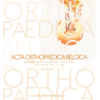Long- versus short-segment fixation with an index vertebral screw for management of thoracolumbar fractures
Kyphosis, Long-segment, Short-segment, Thoracolumbar fractures
Published online: Jan 16 2023
Abstract
The choice of the best stabilization technique for thoracolumbar fractures remains controversial. While LSF includes too many motion segments, SSF is associated with a high rate of fixation failure and subsequent loss of kyphotic correction. Our objective is to compare the surgical, clinical, and radiological outcomes of thoracolumbar spine fixation using long-segment fixation (LSF) versus short-segment fixation (SSF) with a screw in the fractured vertebra. We retrospectively evaluated 63 patients with single- level thoracolumbar fracture types A and B treated during the period between 2010 and 2017 in our institution. Group A (30 patients) was treated by SSF with an intermediate screw in the fractured vertebra, while group B (33 patients) was treated by LSF. Both groups were compared in terms of surgical, clinical, and radiological outcomes. The mean operative blood loss was significantly lower in group A than in group B (451.3 ± 79.9 and 690 ± 92.1 ml, respectively). The mean operative time in Group A was significantly shorter than in group B (58.4 ± 14.8 and 81.5 ± 12.3 minutes, respectively). Both groups achieved a similar Visual Analogue Scale (VAS) for pain and Oswestry Disability Index (ODI) score. No significant difference was found as regards the kyphotic angle correction and the correction loss at final follow-up. In conclusion, SSF with a screw in the fractured vertebra achieved comparable functional and radiological outcomes to LSS with less blood loss and operative time.
